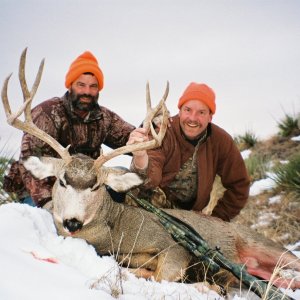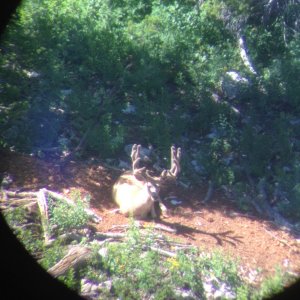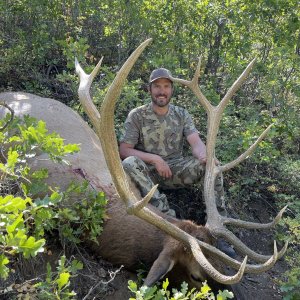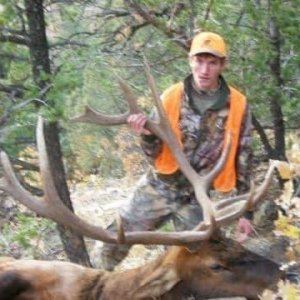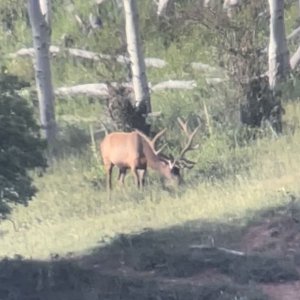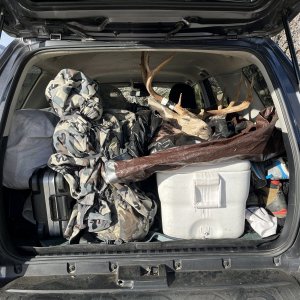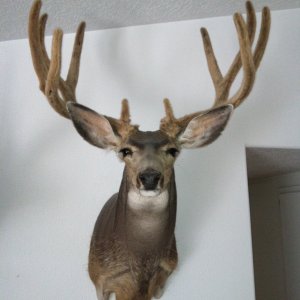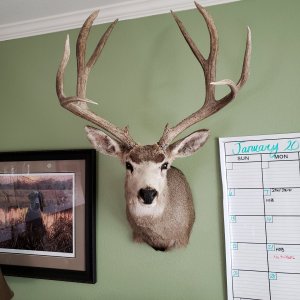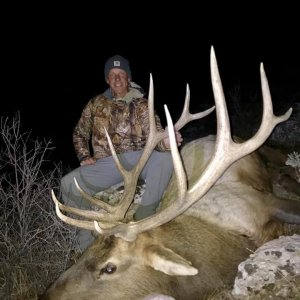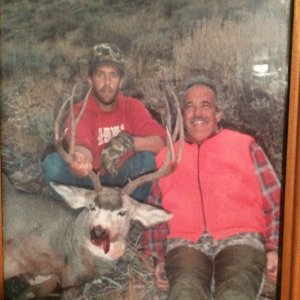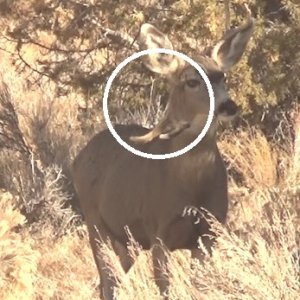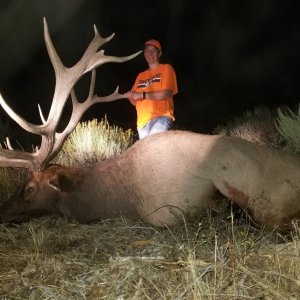S
SpinninYote
Guest
LAST EDITED ON Dec-10-11 AT 11:36PM (MST)[p]
Now I have read these forums a long time, don't post much, and I don't claim to know the solution to Utah's deer problems, but I do know that statistics don't lie. I have read the posts about killing does and the "one doe" thread and I was curious about the effect of killing does when speaking about the whole herd, not just one deer. So out of curiosity I built a spreadsheet, obviously I had to make some rather big assumptions so take it for what its worth. I found the results interesting.
I don't know how to post a spreadsheet or a pdf file to the site so if anyone can help out the I would gladly send them the file.
Here is a try at uploading the spreadsheet as a jpeg
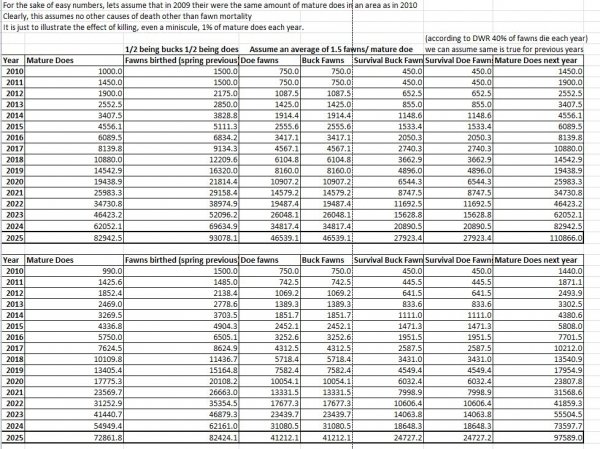

If you don't want to take the time to look over the spreadsheet here is what is basically entails:
It gives the population differences of two deer herds starting at 1000 does. It assumes that all surviving does breed and have an average of 1.5 fawns per year (50% being male and 50% being female). One is calculated over 15 years assuming only death by fawn mortality percentages that are provided by the DWR(40%). The other herd has a 40% fawn mortality rate as well as a 1% death of mature does. I used 1% for ease and because in most areas if a few guys kill does then it is not hard to believe that close to 1% of mature does are killed. Of course the spreadsheet is not so sophisticated to take into account for old age and other causes of death. This is the reason for why I only had it range for 15 years. The summary is that if you do not take 1% of mature does out of the herd each year, then in 15 years over 10,000 more bucks have a chance to try to survive than if that 1% of does are killed each year. Take a look if you'd like and see what you think. It is interesting at the least. I am not saying that someone who would like to kill a doe can't, or should be stoned. I'm just pointing out that the effect of such a killing is quite visible as many MMers have voiced.
Again, we wouldn't even be having this conversation if the state of our herds were more healthy.
Thanks,
P.S. I enjoy reading almost all posts on this site, even the heated threads. When people have a passion about something and have opinions that differ things are bound to get a little heated right?
Now I have read these forums a long time, don't post much, and I don't claim to know the solution to Utah's deer problems, but I do know that statistics don't lie. I have read the posts about killing does and the "one doe" thread and I was curious about the effect of killing does when speaking about the whole herd, not just one deer. So out of curiosity I built a spreadsheet, obviously I had to make some rather big assumptions so take it for what its worth. I found the results interesting.
I don't know how to post a spreadsheet or a pdf file to the site so if anyone can help out the I would gladly send them the file.
Here is a try at uploading the spreadsheet as a jpeg


If you don't want to take the time to look over the spreadsheet here is what is basically entails:
It gives the population differences of two deer herds starting at 1000 does. It assumes that all surviving does breed and have an average of 1.5 fawns per year (50% being male and 50% being female). One is calculated over 15 years assuming only death by fawn mortality percentages that are provided by the DWR(40%). The other herd has a 40% fawn mortality rate as well as a 1% death of mature does. I used 1% for ease and because in most areas if a few guys kill does then it is not hard to believe that close to 1% of mature does are killed. Of course the spreadsheet is not so sophisticated to take into account for old age and other causes of death. This is the reason for why I only had it range for 15 years. The summary is that if you do not take 1% of mature does out of the herd each year, then in 15 years over 10,000 more bucks have a chance to try to survive than if that 1% of does are killed each year. Take a look if you'd like and see what you think. It is interesting at the least. I am not saying that someone who would like to kill a doe can't, or should be stoned. I'm just pointing out that the effect of such a killing is quite visible as many MMers have voiced.
Again, we wouldn't even be having this conversation if the state of our herds were more healthy.
Thanks,
P.S. I enjoy reading almost all posts on this site, even the heated threads. When people have a passion about something and have opinions that differ things are bound to get a little heated right?

